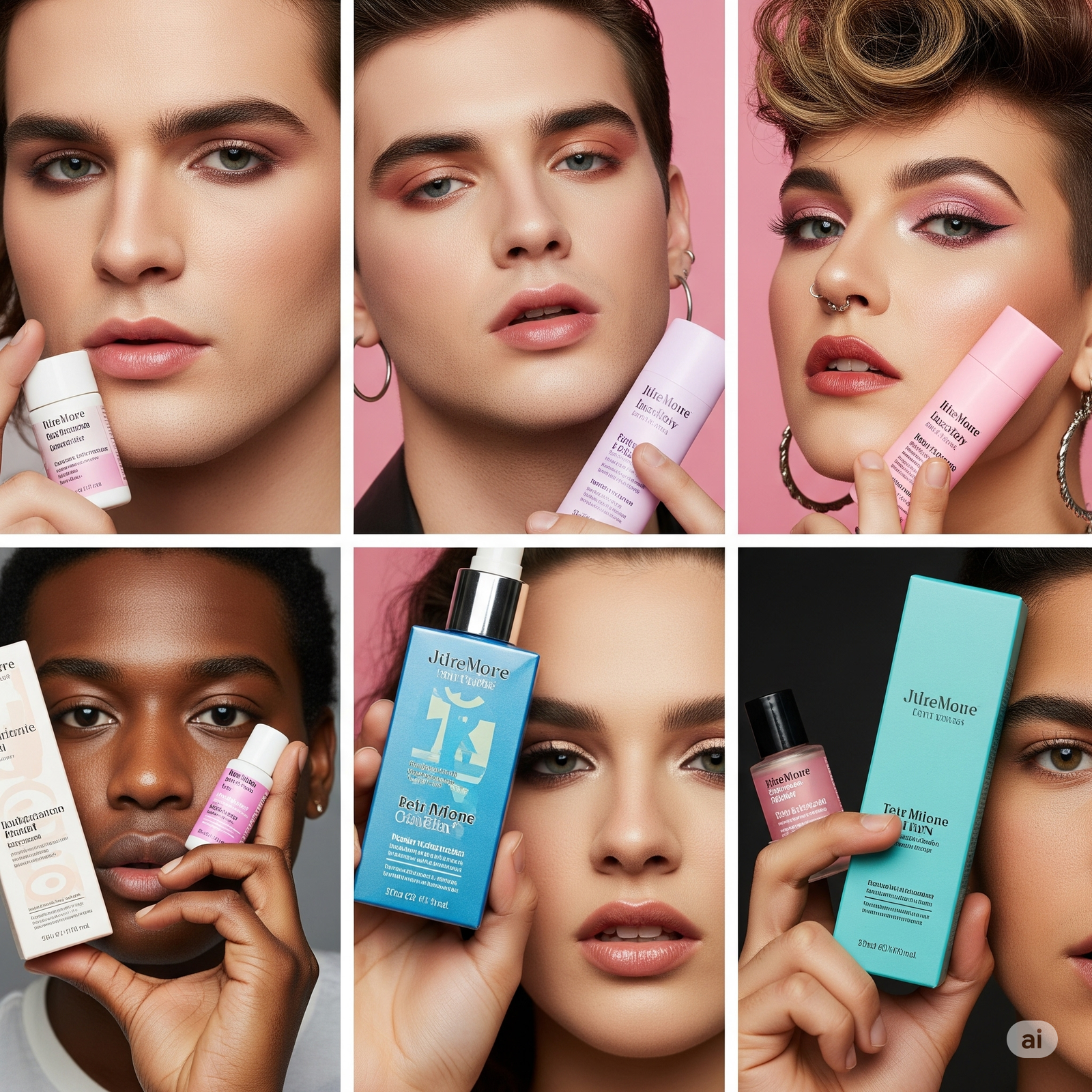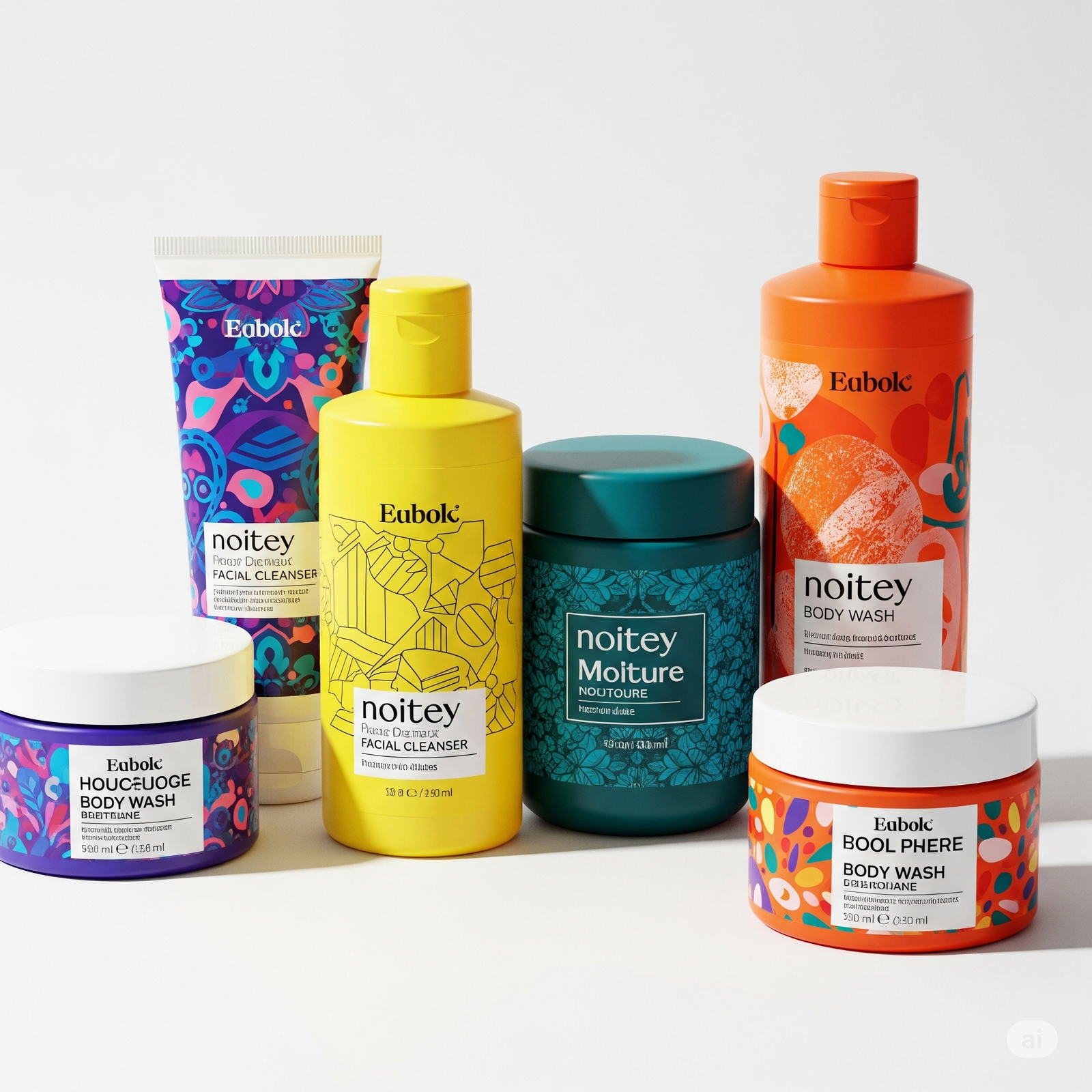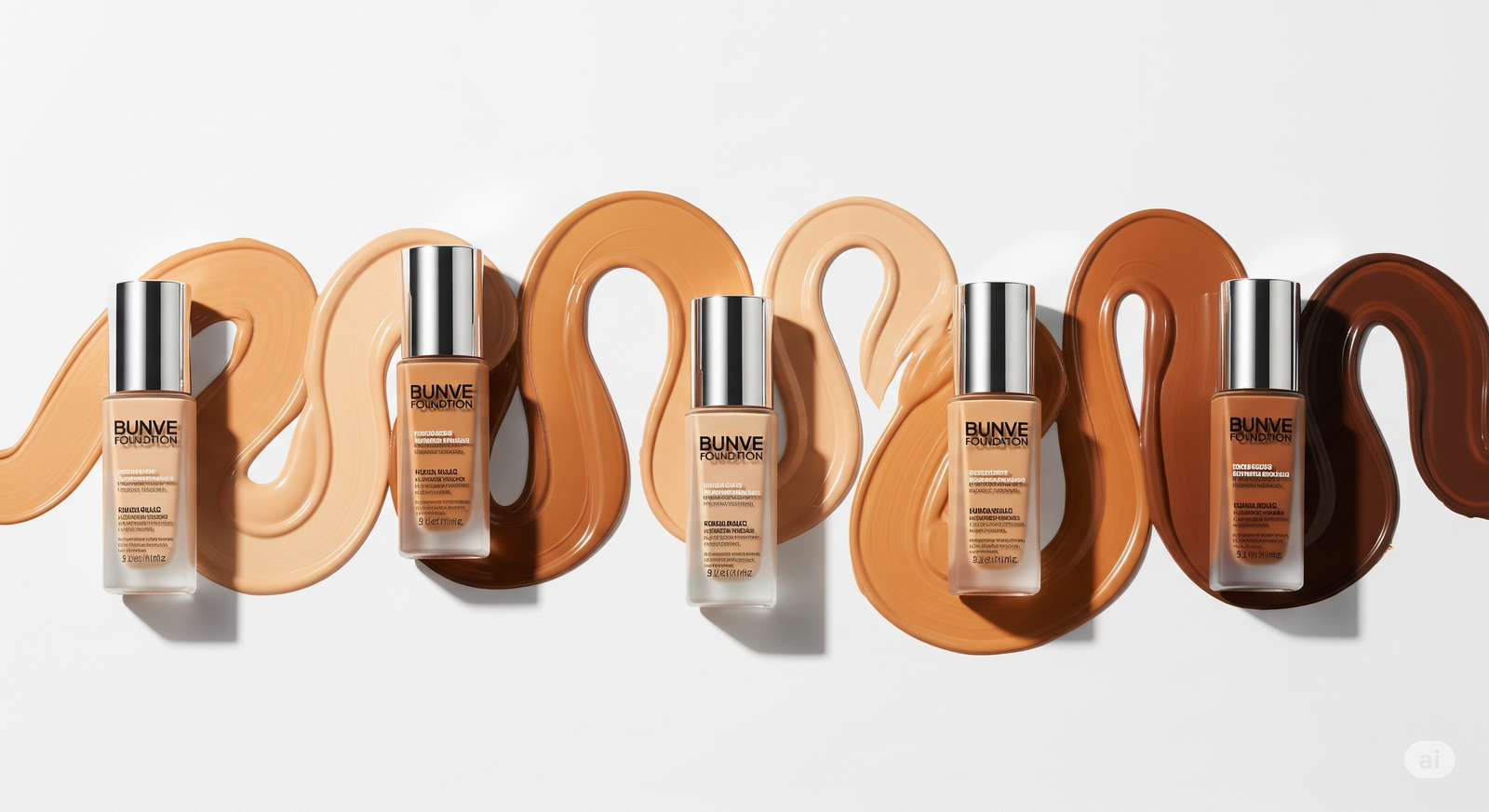Makeup for All Genders: Motion That Breaks Binaries
Admigos animates identity, not categories. Explore how gender inclusive makeup visuals and motion storytelling break beauty binaries across shade and style.
11 Jul'25
By Niharika Paswan


Makeup for All Genders: Motion That Breaks Binaries
The brush doesn’t ask your gender. Neither does pigment. But for too long, beauty has been boxed in: soft tones coded for women, grayscale packaging for men, and anything beyond that left out of frame. That’s changing and fast. The rise of makeup for all genders isn’t just a cultural shift. It’s a visual one. And animation is helping lead that shift.
Because in motion, you don’t need to label. You can just show. A soft glam look melts into a sharp drag line. A sheer balm swipe becomes a neon stamp. Brows flick, gloss drips, shimmer lands. And through it all, identity flows not conforms.
Static imagery often feels forced to pick a lane. But with animated beauty storytelling, you can bypass that. You can create space for fluidity, for expression that doesn’t need to explain itself. You can show what makeup really is: a tool for feeling seen, not a product for fitting in.
Let’s explore how motion can break beauty binaries, and why brands should be leading and not lagging, when it comes to visual gender inclusivity.
Why Traditional Beauty Visuals Are Outdated

Look through most legacy beauty campaigns and you’ll notice two things:
- Gender-coded color (pink for her, navy for him)
- Rigid style formats (feminine softness vs. masculine grit)
This binary framing doesn’t reflect how people actually use makeup today. It reflects marketing assumptions. But users are rejecting those assumptions loudly.
People of all genders are:
- Lining lips and jawlines
- Mixing glitter with five o’clock shadow
- Using concealer not to hide, but to highlight
- Choosing tools by function, not gender signal
- Wearing beauty to feel more like themselves, not less
The market is evolving but many visuals haven’t caught up. Brands may be more inclusive in copy, but their videos still default to coded direction. That’s where animation comes in.
What Genderless Visuals Look and Feel Like
True gender-inclusive makeup visuals aren’t just androgynous. They’re open. They celebrate duality, switch-ups, extremes. They let one face hold softness and edge, glitter and matte, vulnerability and boldness sometimes all in a few seconds.
Here’s how that shows up in motion:
- A highlighter stroke that fades from subtle to showy
- Brows that transform from brushed-up minimal to razor-sharp drag arch
- One face, many moods: fluid, fast, unapologetic
- No "male" or "female" identifiers: just skin, pigment, and style
- A blush morph that plays on cheek, jaw, eyelid by defying typical placement
The key is not to present “neutral” as the only answer. It’s to present variety without hierarchy.
In animation, you can move from one expression to another without apology. No cuts. No justification. Just fluid transformation. That’s freedom.
Breaking Beyond Pink and Blue

One of the subtlest but most damaging, ways beauty boxes in gender is through color coding. We’ve been taught to see dusty pinks as “feminine” and black-matte packaging as “masculine.” But when you strip that away in motion, when the background fades, and pigment becomes the focus then you realize: color is for everyone.
Animation allows for:
- Full-spectrum palettes shifting without borders
- Packaging that pulses with multiple tones at once
- Products shown in use by hands, not gendered faces
- Color stories that layer cool with warm, gloss with grit
- Neons, nudes, metallics: shown not as opposites, but complements
Instead of “unisex” palettes that often mean “muted,” animation lets you tell a bolder story: that everyone deserves drama, softness, creativity, without needing a label first.
Admigos Animates Identity, Not Categories
At Admigos, we build visuals that don’t ask “who is this for?”, they ask “how does this feel?” Our animation approach skips the binary. We don’t cast gendered roles in pigment. We build flows that allow makeup to shift shape, tone, and emotional weight.
One second, a model is bare-faced and gentle. The next, they’re glitter-cut and sharp. We animate transformation and not just application. Because identity is never still, and beauty shouldn’t be either.
Our goal isn’t to neutralize, it’s to humanize. To bring movement, heat, and power into visuals that speak to the many ways people show up in their skin.
Motion That Reflects Real Expression

Here are animation techniques we use (and that brands should consider) to reflect inclusive, identity-driven makeup storytelling:
1. Face-as-canvas
Let the face be a space, not a type. Zoom in on skin as terrain. Let pigment move across it like art which is free, confident, unconstrained.
2. Look-to-look morphs
Instead of before and after, animate between multiple looks. Start with clean skin, build to soft glam, then spike into full editorial. No labels, just layers.
3. Lighting as mood
Shift from warm to cool, neon to natural. Let the light be part of the story. It lets viewers project their own identity into the frame.
4. Tool choreography
Brushes, sponges, fingers, shown in motion without assigned gender. Highlight the ritual, not the person behind it.
5. Blend, bounce, shimmer, shift
Textures matter. Animation lets you exaggerate or soften them in ways that make every product feel expressive and alive regardless of who wears it.
These choices aren’t about aesthetics. They’re about allowing more people to see themselves in the frame. Not as a version of a type but as a version of themselves.
What This Means for Beauty Brands Now
People want to buy from brands that see them. That speak to their self-expression, not a demographic target.
Your visuals say more than your product page ever will. So ask yourself:
- Are your videos still showing “for her” vs. “for him”?
- Are your campaign models labeled instead of styled?
- Do your edits support identity fluidity or enforce form?
If the answer isn’t bold enough, motion can fix it.
With animation, you can rebuild the way you show beauty, from the inside out. You can show possibility, not prescription. You can skip gender tags and let expression lead.
Final Thought: Expression Doesn’t Sit Still
Makeup is not about correction. It’s not even about enhancement. At its best, it’s about truth. And truth isn’t static. It moves. It evolves. It refuses to sit inside someone else’s binary.
If your visuals don’t reflect that, they’re outdated.
Animation lets you go further. It lets you show transformation as spectrum, not split screen. It brings shade, shimmer, shadow to life in ways that feel like identity not just beauty goals.
So whether you’re launching a liner or refreshing your brand visuals, remember: the future of beauty doesn’t look one way. It moves every way.
And when done right, it brings everyone with it.
— By Niharika Paswan
Why Shade Range Should Be an Animated Statement
Admigos creates spectrum-based shade stories with inclusive beauty animation. Show your full range with foundation shade visuals that move, blend, and connect.

How to Animate Foundation Shades Without Bias | Inclusive Beauty Animation
Learn how to animate foundation shades fairly from undertone matching to realistic skin visuals. Admigos shows how to build shade equity into every frame.
